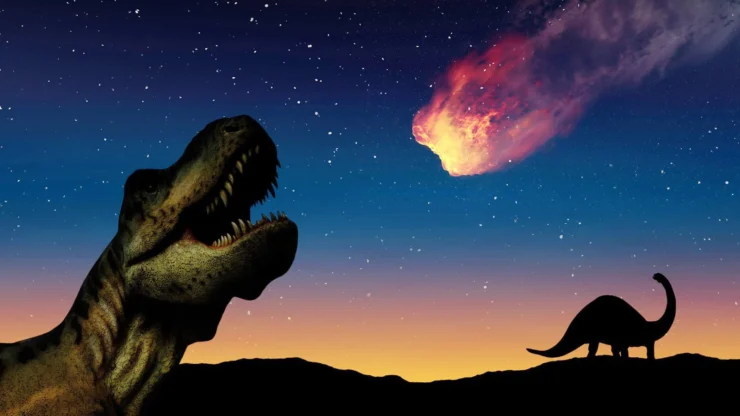During the Cretaceous era, the Chicxulub asteroid wiped off the dinosaurs and the majority of Earth’s species.
According to a new study published by Fox News, the asteroid that wiped off the dinosaurs 66 million years ago also created a “mega-tsunami” with waves that rose more than a mile in height.
Scientists have reproduced the Chicxulub impact, a nine-mile-wide asteroid that wiped out most of Earth’s fauna and plants in addition to the dinosaurs. The study described the results of the worldwide tsunami and flooding.
Researchers are hoping that their findings will help to shed light on the geology of the Cretaceous period.
According to Molly Range, the study’s principal researcher at the University of Michigan “This tsunami was strong enough to disturb and erode sediments in ocean basins halfway around the globe, leaving either a gap in the sedimentary records or a jumble of older sediments.”
A hydrocode, a three-dimensional computer software, was used by researchers to recreate the mega-wave. It modeled the first 10 minutes of the event, including crater creation, the start of the tsunami, and impact.
The team’s simulation revealed that one after impact, the tsunami had moved into the North Atlantic sea and beyond the Gulf of Mexico. Four hours later, waves moved through the Central American seaway and into the Pacific Ocean. The tsunami waves had reached every shoreline in the world 48 hours after the Chicxulub asteroid struck the planet.
The asteroid was estimated to weigh two quadrillion pounds, have an 8.7-mile diameter, and a density of about 165 pounds per cubic foot.
The study authors said in a statement: “Depending on the geometries of the coast and the advancing waves, most coastal regions would be inundated and eroded to some extent. Any historically documented tsunamis pale in comparison with such global impact.”
The tsunami’s wave heights are expected to have increased as it approached shallow-bottom waters, with speeds exceeding 20 centimeters per second.
